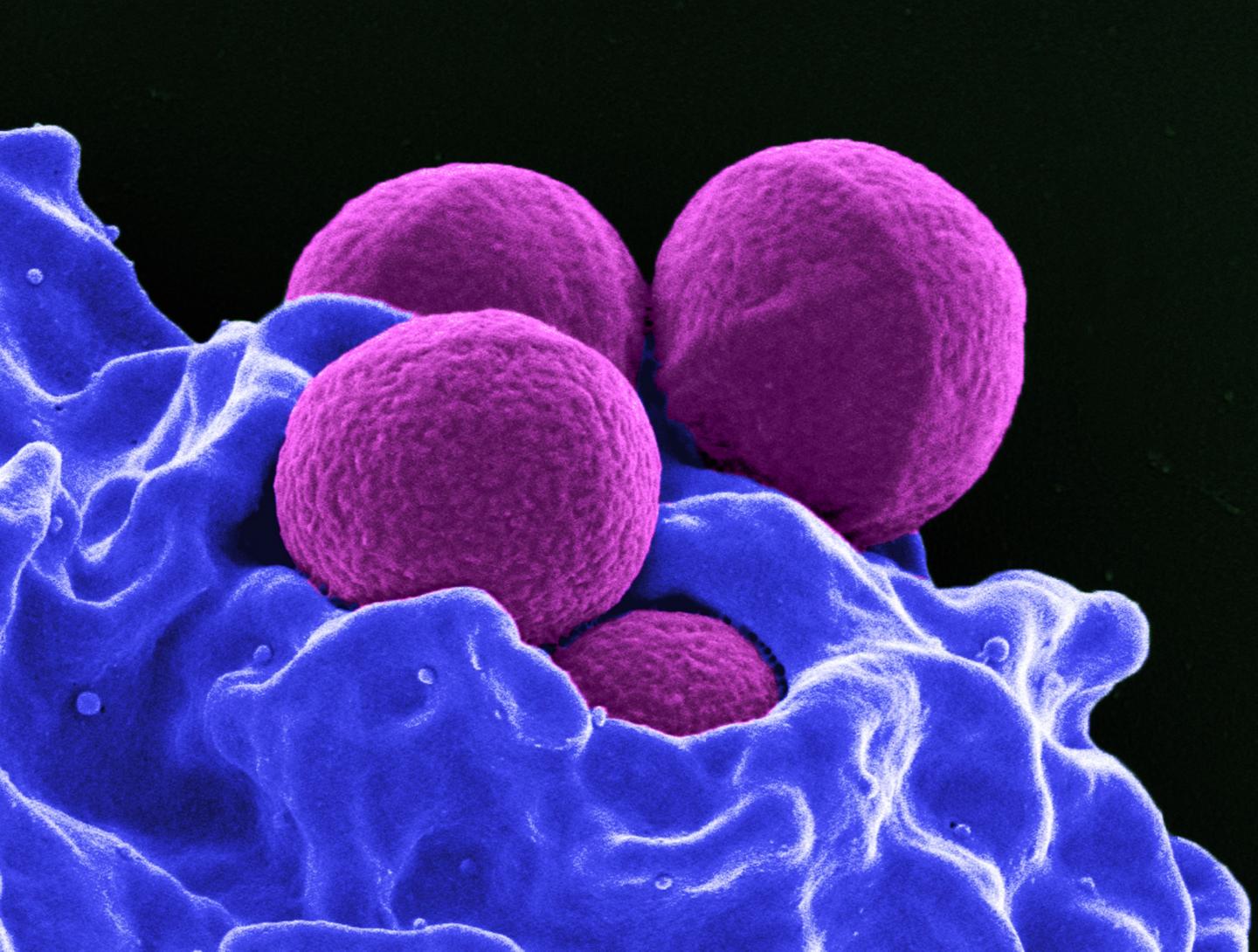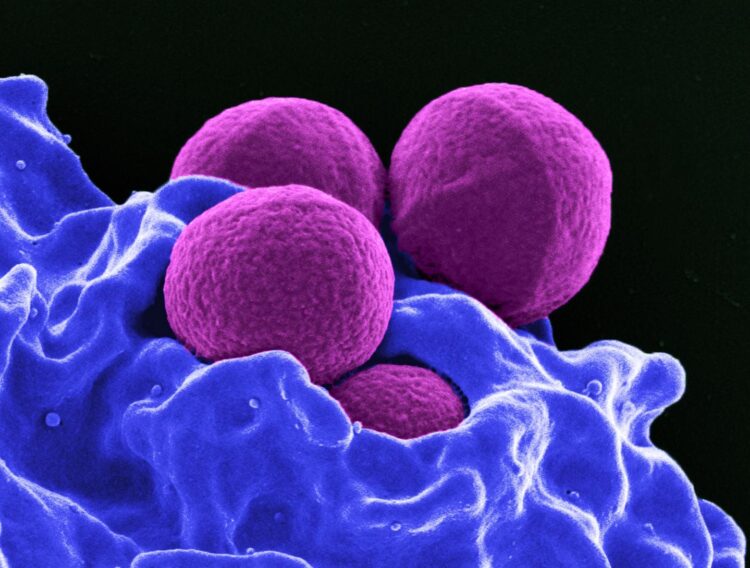
Credit: NIAID
In human reproduction, the genes of the mother and father are combined and mixed in countless variations. Their offspring can differ significantly from one another. However, bacteria multiply by simple cell division, so that the two daughter cells carry the same genetic material as the mother cell. A research team led by Dr. Simon Heilbronner from the Interfaculty Institute for Microbiology and Infection Medicine at the University of Tübingen and the German Center for Infection Research has recently discovered how infectious bacteria can produce genetic variants among sibling cells. Certain sections of the genetic material are doubled or multiplied. This gives the bacteria new capabilities that make it possible for them to influence the immune system of the host in their favour. The results of this study, published in the journal Nature Communications, provide important information on how pathogens develop and adapt in their battle against the human immune system.
If bacteria multiply by simple division, clones are created. The cells all have the same genetic composition and the same properties. “However, the bacteria must remain flexible, because their envi-ronmental conditions are constantly changing. This is particularly true of pathogens that are strug-gling with the human immune system and need to deal with any antibiotics that may be administered if they are to survive,” says Dr. Heilbronner. His team has shown how the bacterial pathogen Staphy-lococcus aureus causes inflammation, and how variants develop if gene exchange with other bacterial communities is not possible.
Accordion genes expand the possibilities
“We found that in Staphylococcus aureus, some parts of the genetic material may be available in the form of several exact copies. The number of such copies varies greatly between closely related bacteria,” according to Dr. Heilbronner. Genetic mechanisms during cell division result in duplicates being able to multiply in the genetic material of the bacteria. “They can expand and shorten again, like an accordion. This results in a variety of daughter cells with different properties in the course of a few generations.” Expanded genetic material leads to stronger protein production by the bacterial cell. “For example, if these proteins transport antibiotics out of the cell or influence the immune system, the bacteria may improve their chances of survival,” according to the researcher.
The Tübingen researchers have now shown that such genetic processes occur frequently in Staphylococcus aureus. “Administration of antibiotics can strengthen them. The pathogens now have better ways to respond to human immune cells.” The team believes that these processes are important in the evolution of pathogens that are successful and therefore dangerous for humans. The team’s findings will be used in the development of new forms of treatment by the Tübingen Cluster of Excellence “Controlling Microbes to Fight Infections”.
###
Media Contact
Dr. Simon Heilbronner
[email protected]
Original Source
https:/
Related Journal Article
http://dx.





